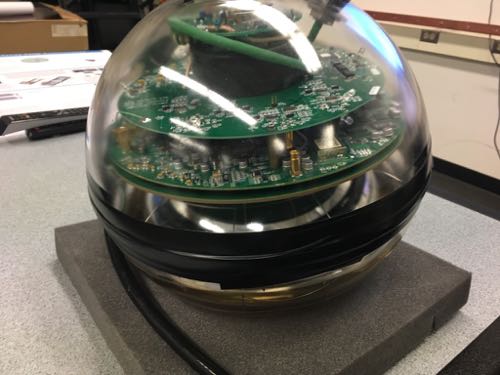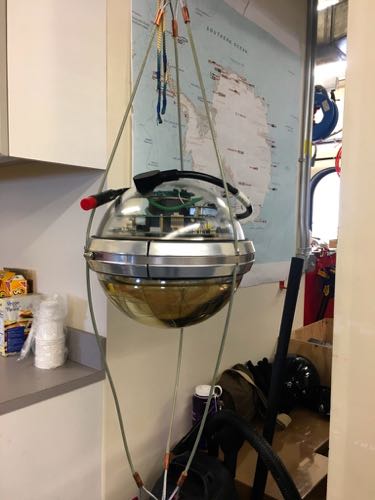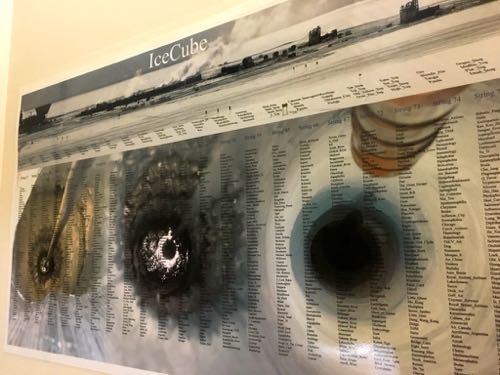When Neutrinos Interact
IceCube is looking for neutrinos. But, as mentioned in my previous journal, neutrinos are nearly invisible. I think of them as the ninjas of the sub-atomic world. So how do you see something that’s so stealthy that it’s nearly invisible?
The answer lies in the physics of how a neutrino interacts with other particles.
There are lots and lots of neutrinos all around you and even going through you right now! In fact, there are trillions of neutrinos going through your body every second. Of course, you can’t see the neutrinos – they’re much too small.
Since neutrinos are chargeless and nearly massless, they pass easily through you, your desk, the floor, even the entire Earth! But every now and then a neutrino happens to hit the nucleus of an atom within IceCube and a process is set in motion:
- Rarely, a neutrino hits a proton or a neutron in the Antarctic ice.
- When the two collide, a particle known as a muon emerges. (assuming it was a muon neutrino...more on this later)
- Muons radiate blue light (Cherenkov radiation) as they make their way through the ice. The muon follows the same path as the original neutrino, so we can still trace it back to the source.
To understand what the blue light (Cherenkov radiation) looks like, imagine a boat going really fast through the water. A wake is created behind the boat, spreading out and creating fun waves for waterskiing. The blue light (Cherenkov radiation) spreads out in a very similar pattern to the wake of a boat.
Fun fact: the blue light that we’re detecting in IceCube is the same blue light often seen glowing from nuclear reactors.
So really, at the end of the day, IceCube is trying to detect this signature light pattern.
Digital Optical Module (DOM)
To detect light, a Digital Optical Module, usually referred to as a DOM, has been created.
 The bottom of the DOM contains a photomultiplier tube which amplifies the light. The top fo the DOM turns that light into an electric pulse that the computer can read.
The bottom of the DOM contains a photomultiplier tube which amplifies the light. The top fo the DOM turns that light into an electric pulse that the computer can read.
 A DOM hanging in the IceCube Lab. There are over 5000 of these DOMs sitting deep in the ice, waiting for the signature light pattern from a neutrino interacting.
A DOM hanging in the IceCube Lab. There are over 5000 of these DOMs sitting deep in the ice, waiting for the signature light pattern from a neutrino interacting.
This DOM is essentially a really sensitive camera.
What’s better than one DOM? Lots and lots of DOMs. 5,160 DOMs to be exact.
 With over 5,000 DOMs in the array, it would be quite tedious to refer to each individual DOM by its number. Instead, the team named each DOM. This picture shows a few of those names – everything from "Psychology" to "Goat" to "Air_Canada." With so many DOMS, they had to get creative! What would you name your DOM?
With over 5,000 DOMs in the array, it would be quite tedious to refer to each individual DOM by its number. Instead, the team named each DOM. This picture shows a few of those names – everything from "Psychology" to "Goat" to "Air_Canada." With so many DOMS, they had to get creative! What would you name your DOM?
Remember, these DOMs are looking for the light that comes from a neutrino hitting the nucleus of an atom…which doesn’t happen very often. So the larger you make the telescope of DOMs, the more likely you are to see something!
Next Journal
In the next journal I’ll talk about how they got 5,160 DOMs to the South Pole and into the ice.


Add new comment